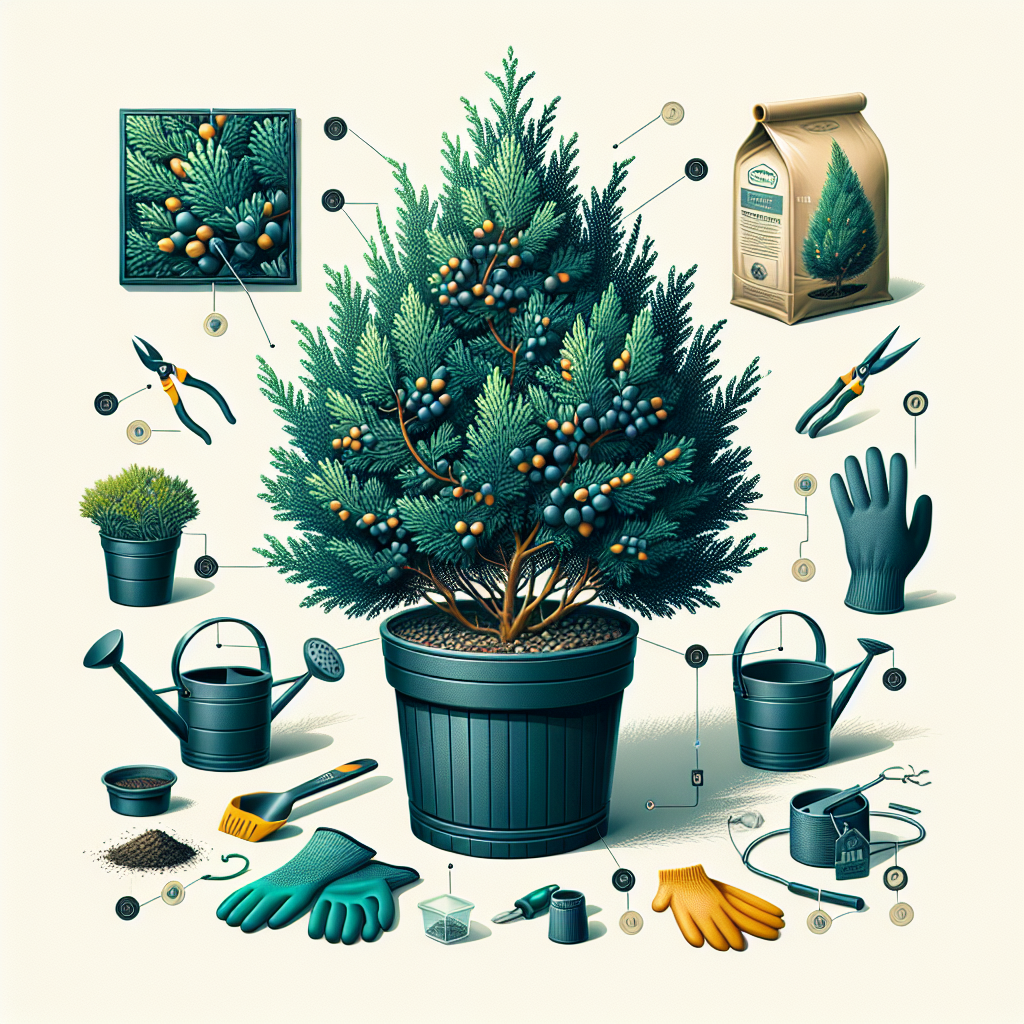Juniper in Container: Everything You Need to Know
Are you looking to add a touch of green to your living space but don’t have the luxury of a garden? Or do you want to bring some nature into your apartment or office? Look no further than juniper plants in containers! These versatile and low-maintenance plants are perfect for adding a pop of color and freshness to any indoor or outdoor space. Whether you’re a seasoned gardener or just starting out, this guide will provide you with all the information you need to successfully grow junipers in containers.
**Choosing the Right Juniper Variety**
When it comes to growing junipers in containers, choosing the right variety is key. There are many different types of junipers available, each with their own unique characteristics and growth habits. Some popular varieties for container gardening include Blue Star Juniper, Gold Lace Juniper, and Dwarf Japanese Garden Juniper. Before selecting a variety, consider factors such as the size of your container, the amount of sunlight your space receives, and the overall aesthetic you’re trying to achieve. Make sure to choose a variety that is well-suited for container gardening and will thrive in your specific environment.
**Selecting the Right Container**
The next step in successfully growing junipers in containers is selecting the right container. The size and type of container you choose can have a significant impact on the health and growth of your juniper plant. Make sure to select a container that provides adequate drainage to prevent waterlogged soil, as junipers do not like standing water. Additionally, choose a container that is large enough to accommodate the root system of your juniper plant and allows for some room for growth. Consider using a lightweight plastic or resin container if you plan on moving your plant around frequently, or opt for a more durable ceramic or terracotta pot for a more permanent display.
**Soil and Watering Needs**
Junipers are relatively low-maintenance plants when it comes to soil and watering needs, but it’s still important to provide them with the right growing conditions. Use a well-draining potting mix specifically formulated for cacti and succulents when planting your juniper in a container. This will help prevent overwatering and root rot, which can be detrimental to junipers. Water your juniper plant when the top inch of soil feels dry to the touch, but be careful not to overwater as this can lead to yellowing foliage and other issues. During hot summer months, you may need to water more frequently than during cooler seasons.
**Light and Temperature Requirements**
Junipers are hardy plants that thrive in full sun or partial shade conditions. When growing junipers in containers indoors, place them near a south-facing window where they can receive at least 6-8 hours of direct sunlight per day. If growing outdoors, make sure to place your container where it will receive adequate sunlight throughout the day. Junipers prefer cooler temperatures during winter months but can tolerate some frost if properly acclimated. Avoid placing your juniper plant near heaters or vents that may dry out the air excessively.
**Pruning and Maintenance**
Regular pruning is key to maintaining the shape and appearance of your juniper plant when grown in containers. Use sharp pruning shears to trim back any dead or overgrown branches, making sure not to remove more than one-third of the plant’s foliage at once. You can also prune selectively throughout the year to encourage new growth and maintain an attractive shape. Fertilize your juniper plant once per year in early spring with a balanced slow-release fertilizer specifically formulated for evergreen trees.
**Pests and Diseases**
While junipers are relatively resilient plants, they can still fall victim to pests such as spider mites, aphids, scale insects, and bagworms when grown in containers. Keep an eye out for any signs of pest infestation such as discoloration or webbing on leaves, and treat promptly with insecticidal soap or neem oil if necessary. Additionally, ensure good air circulation around your plant by spacing out multiple containers properly.
In conclusion
Growing junipers in containers can be a rewarding experience that adds beauty and tranquility to any space – whether it’s indoors on a sunny windowsill or outdoors on a patio or balcony.
By choosing the right variety, selecting an appropriate container with good drainage,
providing well-draining soil,
adequate sunlight,
and regular maintenance including pruning
and monitoring for pests,
your junipers can thrive year-round.
With these tips in hand,
you’re well on your way
to successfully growing beautiful
and healthy
junipers
in containers.
FAQ:
1) How often should I water my juniper plant?
Watering frequency will depend on factors such as temperature,
humidity levels,
and season.
As a general rule,
water when
the top inch of soil feels dry
to touch.
2) Can I keep my potted
juniper indoors all year round?
Yes,
junipers can be kept indoors permanently;
just ensure they receive adequate sunlight.
3) Should I repot my
juniper plant every year?
Junipers generally don’t need frequent repotting.
You can repot every 2-3 years,
or whenever roots become root-bound.
4) Are there any specific pests I should watch out for?
Common pests include spider mites,
aphids,
scale insects,
and bagworms.
Regularly inspect your plants
for signs of infestation.
5) Can I use regular potting soil for my Juniper?
It’s recommended
to use well-draining potting mix formulated for cacti/succulents.
Regular potting soil may retain too much moisture
causing root rot issues.
If you have any other questions about growing Junipers in containers don’t hesitate – please comment below!













